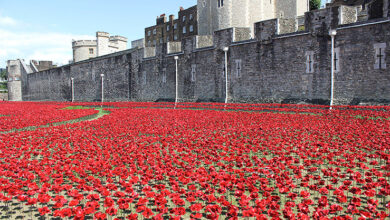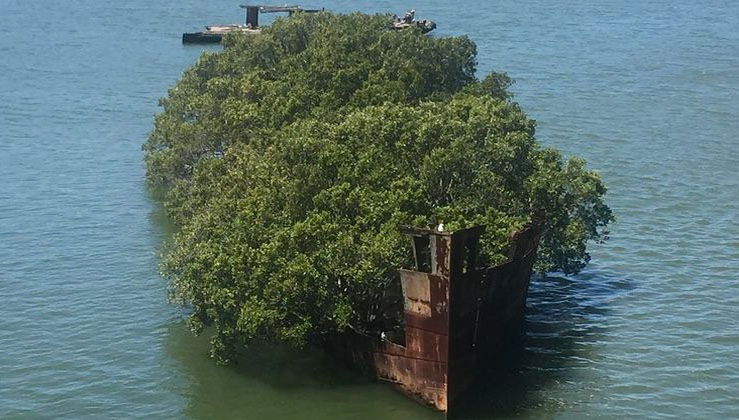
Once a proud steamship that served in World War II, the SS Ayrfield now rests in Sydney’s Homebush Bay—transformed by time and nature into a breathtaking floating forest.
The SS Ayrfield, originally named Corrimal, was launched in 1911 by the Greenock and Grangemouth Dockyard Co. Weighing 1,140 tons, the steel-hulled steamship was built to transport goods between Newcastle and Sydney. However, its mission changed dramatically during World War II when it was repurposed to carry vital supplies to Allied forces in the Pacific. This humble cargo vessel soon became a key player in wartime logistics, reinforcing its place in maritime history. After the war, in 1951, the ship was sold to R.W. Miller & Co., renamed Ayrfield, and modified into a collier to haul coal between Newcastle and the company’s terminal in Blackwattle Bay. It continued this work for another 21 years before being officially decommissioned in 1972. The Ayrfield was then sent to Homebush Bay, which at the time served as a ship-breaking yard, to be dismantled. However, the disassembly process was never completed, and the rusting hulk of the vessel was left abandoned in the bay.
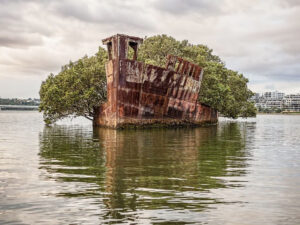
Homebush Bay’s Industrial Past and Environmental Revival
Homebush Bay, situated on the southern bank of the Parramatta River in Sydney, Australia, has a complex history. Once a vibrant industrial zone throughout the 20th century, the area became notorious for pollution, including the dumping of toxic waste and derelict ships. Among the industrial giants was Union Carbide, which manufactured dangerous chemicals like Agent Orange—contributing to severe contamination, including dioxin pollution. Due to the extent of environmental damage, fishing was banned in large parts of Sydney Harbour, including Homebush Bay. But in the 1980s, rehabilitation efforts began to reverse the environmental degradation. The transformation accelerated in the lead-up to the 2000 Sydney Olympic Games. Restoration projects revitalized the mangrove wetlands and saltmarshes that once flourished in the area. Today, Homebush Bay has become a vibrant hub of residential and commercial activity, with parks and green spaces welcoming visitors once again.
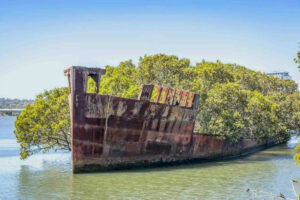
The Floating Forest: Nature’s Triumph Over Steel
Amid the remnants of old shipwrecks in Homebush Bay, one vessel stands out—the SS Ayrfield. What distinguishes it is not just its rich history, but how it has been reclaimed by nature. Over the decades, mangrove trees took root in the hollowed-out hull of the ship, transforming it into a lush floating forest. The image is surreal: a rusted relic of war and industry now hosting vibrant greenery in the tranquil waters of the bay. This fusion of decay and life has turned the Ayrfield into a captivating destination for tourists and photographers. A dedicated Shipwreck Lookout was even created for visitors to appreciate its haunting beauty. The juxtaposition of rusting steel and thriving flora makes the ship a powerful symbol of nature’s ability to reclaim and repurpose even the most unlikely places.
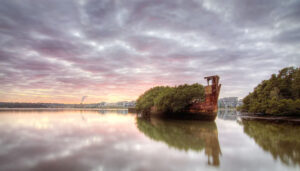
A Living Relic of Maritime History
The 111-year-old SS Ayrfield is more than just an abandoned ship—it is a floating monument to history, resilience, and ecological renewal. Once a war supply vessel and coal transporter, it now lives on as the Floating Forest, a rare spectacle where history and nature coexist. Whether viewed as a relic, an art piece, or a symbol of environmental healing, the Ayrfield continues to inspire and awe those who visit Homebush Bay.



